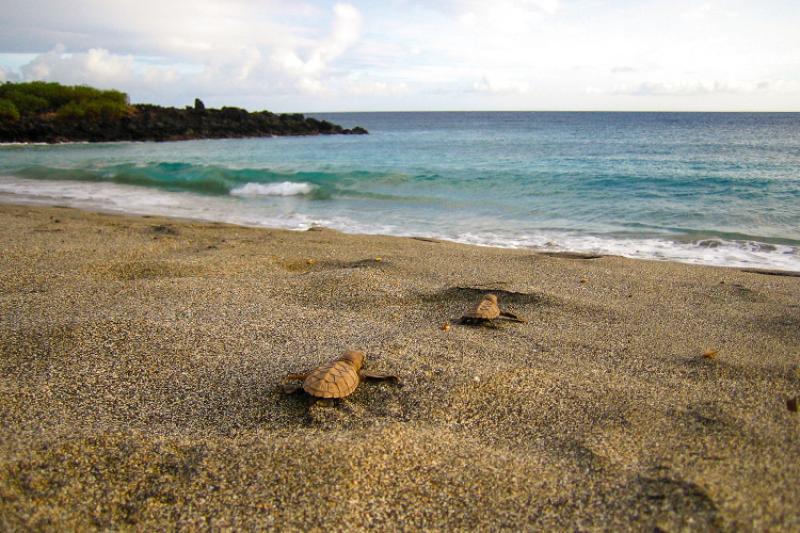In Hawaiʻi, fewer than 200 nesting female hawksbill sea turtles have been documented in the last 30 years. These turtles—known as honu‘ea in Hawaiian—make up one of the most endangered sea turtle populations in the world.
NOAA Fisheries research suggests individuals in this small population spend their lives around the Hawaiian Islands. They are also genetically distinct from other hawksbill populations in the Pacific. “These turtles are Hawaiian hawksbills,” says Lauren Kurpita, coordinator of the Hawaiʻi Island Hawksbill Project, a small conservation program that’s based out of Hawaiʻi Volcanoes National Park and looks after the turtles.
The vast majority of female honu‘ea nest solely along the southern coast of Hawaiʻi Island. Here, they face a multitude of challenges.
Invasive plant species like Guinea grass are taking over native plant habitat, preventing nesting and entangling hatchings. Invasive wildlife like mongooses, cats, and rats dig up and eat hawksbill eggs and prey on hatchlings that emerge out of the nest. Human activities like coastal development, beach driving, and using bright lights on beaches further disrupt nesting activity and hatchlings.
And let’s not forget the widespread threats that also affect other sea turtle populations across the globe. These include marine debris, climate change and sea level rise, and accidental bycatch.
The Hawaiʻi Island Hawksbill Project is composed of just Kurpita, a field technician, and a handful of seasonal volunteers. It aims to counteract these threats by studying, monitoring, and protecting the island’s nesting honu‘ea and hatchlings.
Throughout the April–December nesting season, Kurpita and her team maintain an active, daily presence across the approximately dozen nesting beaches. They count and tag every nesting female, and try to gauge how many hatchlings successfully made it out of the nests. They protect nests from invasive predators. They even try to restore the turtles’ natural habitat by cleaning up marine debris and clearing out invasive coastal plants.
But while tackling the turtles’ threats, the program faces its own batch of challenges. These range from personnel management issues to safety concerns to difficulties accessing nesting beaches. And there’s a connecting thread running through most of these hurdles: severe lack of funds.
Read our engaging and interactive StoryMap
Pacific Islands Region Marine Turtle Management and Conservation Program
The Hawaiʻi Island Hawksbill Project receives grants through the Pacific Islands Region Marine Turtle Management and Conservation Program. This program supports conservation, protection, or management actions supporting recovery of Endangered Species Act-listed sea turtle species. The species must occur within the Pacific Islands region or of aggregations (or species) with linkages to the Pacific Islands region. Such species may migrate through, nest or forage within the region, or be impacted by federally managed activities and relevant to fishery management and recovery obligations.

